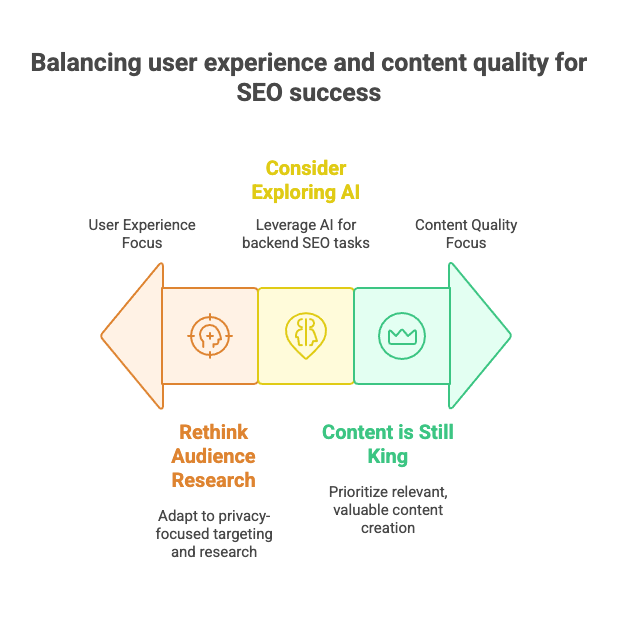To say that search engine optimization (SEO) has changed a great deal over the past several years would be putting it lightly. Today’s SEO landscape is nearly unrecognizable compared to what it looked like in 2018. And even now, it still continues to change.
Here are a few tips to help you keep pace.
Put the User Experience First
We’re just about rounding on the one-year anniversary of Google’s Core Web Vitals Update. Also known as the Google Page Experience Update, Core Web Vitals officially establish a website’s user experience as a ranking factor. If you haven’t already started prioritizing things like interactivity, load time, and ease of use by now, it’s past time you do so.
Because if you don’t, it’s not just your PageRank that’s going to suffer—your audience is going to ditch your website for a competitor that provides a better experience.

Content is Still King
Fortunately, not everything has changed. Content is still the best tool in your marketing and SEO arsenal. As long as you provide your audience with content that’s relevant and valuable to them, everything else will fall nicely into place.
See, there’s a common thread in the majority of Google’s algorithm updates. Every single one is ultimately designed to make the search engine better at recognizing quality. The better your content, the more beneficial these updates will ultimately be for you.
Rethink Audience Research and PPC Targeting
Arguably one of the biggest news stories of the past several years has involved Google’s decision to retire third-party tracking cookies from its Chrome browser. Unsurprisingly, this created a massive ripple effect in both advertising and SEO, effectively setting an end of life date for behavioral targeting. To replace behavioral advertising, Google is currently testing a new ad feature known as Topics, which consists of three broad components:
- A website or ad network’s topics/subjects
- The topics a user is interested in, based on their browsing behavior
- Alignment between user topics and website/network topics.
Basically, it’s contextual advertising with a slightly different coat of paint.
Now, it’s important to note that none of this is going to really come into effect until 2024, the current deadline for phasing out cookies. Alongside Topics, Google is reportedly also testing multiple new Privacy Sandbox technologies. While much of these are still under wraps, it may be worthwhile to start assessing how you target content and research your customers now.
Consider Exploring AI
Over the past few years, artificial intelligence has evolved in leaps and bounds. Many SEO tools now leverage a combination of AI, machine learning, and natural language processing to handle much of the backend work, from keyword research to topic suggestions. If done right, implementing them within your own organization could give you a considerable competitive edge.
Empathy, Not Analytics
People are exhausted, and you can hardly blame them. The past several years have been some of the most emotionally trying in recent memory. What that means for you is that customers have less patience than ever for overly-salesly or irrelevant messaging.
It also means that a little empathy can go a long way. Shape your content to be more conscientious, more focused on social responsibility, and more aware of your audience’s needs.




